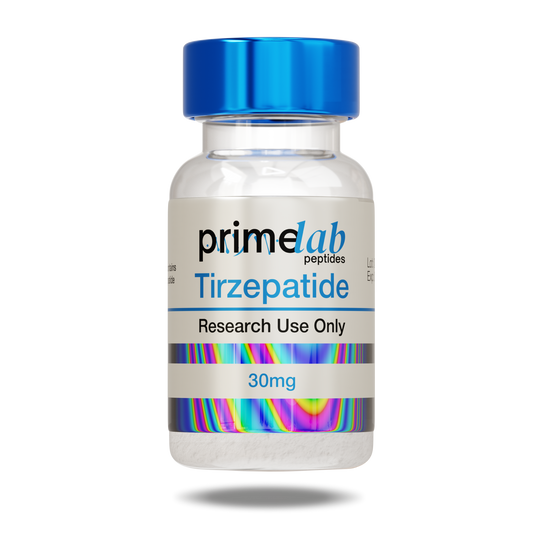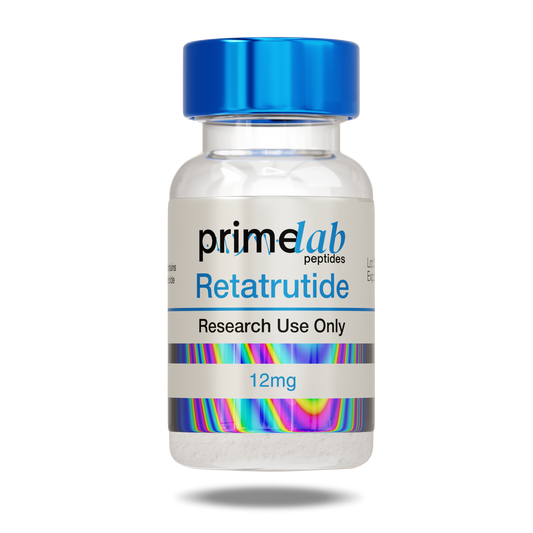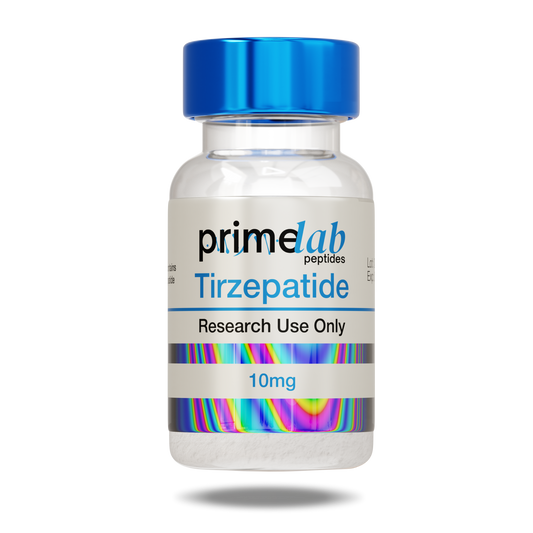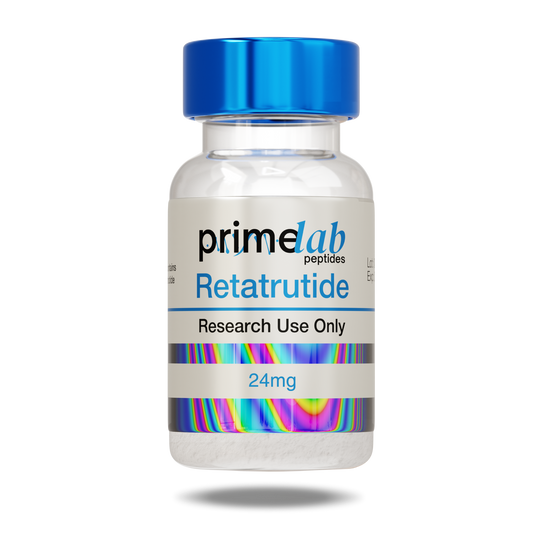All product descriptions and articles provided on this website are intended strictly for informational and educational purposes. Our products are designed exclusively for in-vitro research (i.e., experiments conducted outside of a living organism, typically in glassware such as test tubes or petri dishes). These compounds are not approved by the FDA for use in humans or animals. They are not medications, nor are they intended to diagnose, treat, prevent, or cure any disease or medical condition. Any bodily administration-human or animal-is strictly prohibited by law. Our products are not for human consumption under any circumstances.

Obesity and type 2 diabetes remain critical global health challenges, with rising prevalence demanding innovative treatment approaches. Retatrutide emerges as a promising multi-pathway therapeutic, attracting significant clinical interest for its potent effects on weight loss and metabolic control. This novel drug offers new hope by targeting multiple hormonal pathways simultaneously, potentially transforming care for millions worldwide.
What is Retatrutide?
Retatrutide[1] is a unique triple receptor agonist that activates GLP-1 (glucagon-like peptide-1), GIP (glucose-dependent insulinotropic polypeptide), and glucagon receptors. This triagonism distinguishes it from existing therapies such as semaglutide and tirzepatide, which focus on single or dual receptor pathways. By engaging three key receptors involved in energy balance, insulin release, and lipid metabolism, retatrutide delivers a more comprehensive metabolic effect.
The Science: How Retatrutide Works
Retatrutide is designed as a triple receptor agonist, representing an advanced form of combination therapy that simultaneously targets three hormonal pathways critical to metabolic regulation. This triple therapy[2] approach leverages the complementary actions of GLP-1, GIP, and glucagon receptors to produce a more comprehensive and effective treatment compared to single or dual agonist drugs. Each receptor targeted by retatrutide plays a critical role:
1- GLP-1 promotes satiety and stimulates insulin secretion, helping reduce appetite and improve blood sugar levels.
2- GIP enhances insulin secretion and improves fat metabolism, further supporting glucose control and energy utilization.
3- Glucagon increases energy expenditure and fat burning, contributing to weight loss and improved metabolic rate.
The synergistic activation of these receptors through triple therapy leads to amplified effects on weight reduction, enhanced glycemic control, and improved lipid profiles across multiple tissues, including the pancreas, brain, liver, and adipose tissue. By addressing multiple metabolic dysfunction pathways simultaneously, retatrutide’s triple agonism offers a promising new horizon in obesity and diabetes treatment.

Clinical Evidence: Efficacy and Outcomes
Retatrutide has demonstrated impressive results in Phase II and III clinical trials, establishing its potential as a leading therapy for obesity and type 2 diabetes.
1- Weight Loss Results: In a Phase II trial[3], retatrutide achieved up to 24.2% average body weight reduction after 48 weeks of treatment in adults with obesity but without diabetes. Remarkably, 83% of participants experienced weight loss greater than 15%, a threshold associated with significant health benefits. These outcomes surpass many current obesity treatments and showcase retatrutide’s powerful multi-receptor mechanism.
2- Improvements in HbA1c for Diabetes Management: Among participants with type 2 diabetes, retatrutide demonstrated substantial improvements in glycemic control, reducing HbA1c levels by 1.3% to 2.0%[4] after 24 to 26 weeks of treatment. This degree of HbA1c reduction indicates enhanced insulin secretion and glucose metabolism, positioning retatrutide as a highly effective option for managing diabetes alongside weight loss.
3- Effects on Liver Steatosis and Overall Metabolic Health: Beyond weight and glucose control, retatrutide has shown promise in reducing liver fat accumulation[5] (liver steatosis), a frequent complication in obesity and diabetes. Improvements in liver function markers and lipid profiles were observed, suggesting comprehensive metabolic benefits that extend cardiovascular and hepatic protection .
These clinical trial outcomes collectively highlight retatrutide’s multifaceted efficacy, paving the way for its potential role as a transformative therapy for metabolic diseases.
Side Effects and Safety Profile
Common side effects are mostly gastrointestinal and dose-dependent, including nausea, vomiting, diarrhea, constipation, and decreased appetite. Clinical data[6] show that these effects are typically mild to moderate and tend to diminish with continued treatment. Other monitored potential side effects include
- Nausea
- Vomiting
- Diarrhea
- Constipation
- Decreased appetite
- Transient increases in heart rate
- Gallbladder-related events (e.g., cholelithiasis)
- Elevated pancreatic enzymes
These side effects typically diminish over time with continued treatment and appropriate dose titration.
Stay Informed: The Promising Journey of Retatrutide and What’s Next
Ongoing Phase III trials aim to confirm retatrutide’s safety and efficacy in larger populations and diverse indications, including obesity, type 2 diabetes, and non-alcoholic fatty liver disease. Preliminary results show a potential to surpass existing treatments in weight reduction, offering new frontiers in metabolic disorder management.
At Prime Lab Peptides, we provide high-purity Retatrutide strictly for laboratory and in vitro research purposes. Our commitment to rigorous quality control and scientific integrity ensures researchers have access to reliable materials for advancing metabolic studies. Stay at the forefront of discovery, explore Prime Lab Peptides’ research-grade Retatrutide today, and support the next wave of scientific innovation.

Frequently Asked Questions (FAQ)
What is retatrutide?
Retatrutide is an investigational triple receptor agonist targeting GLP-1, GIP, and glucagon receptors to promote weight loss and improve blood sugar control in obesity and type 2 diabetes.
How effective is retatrutide for weight loss?
Clinical trials show retatrutide can reduce body weight by up to 24% after 48 weeks, significantly outperforming many current obesity treatments.
Can retatrutide help manage type 2 diabetes?
Yes, retatrutide improves blood sugar control by lowering HbA1c levels by up to 2%, enhancing insulin secretion and metabolic function.
What are the common side effects of retatrutide?
The most common side effects are mild gastrointestinal symptoms like nausea and diarrhea, usually subsiding as treatment continues.




